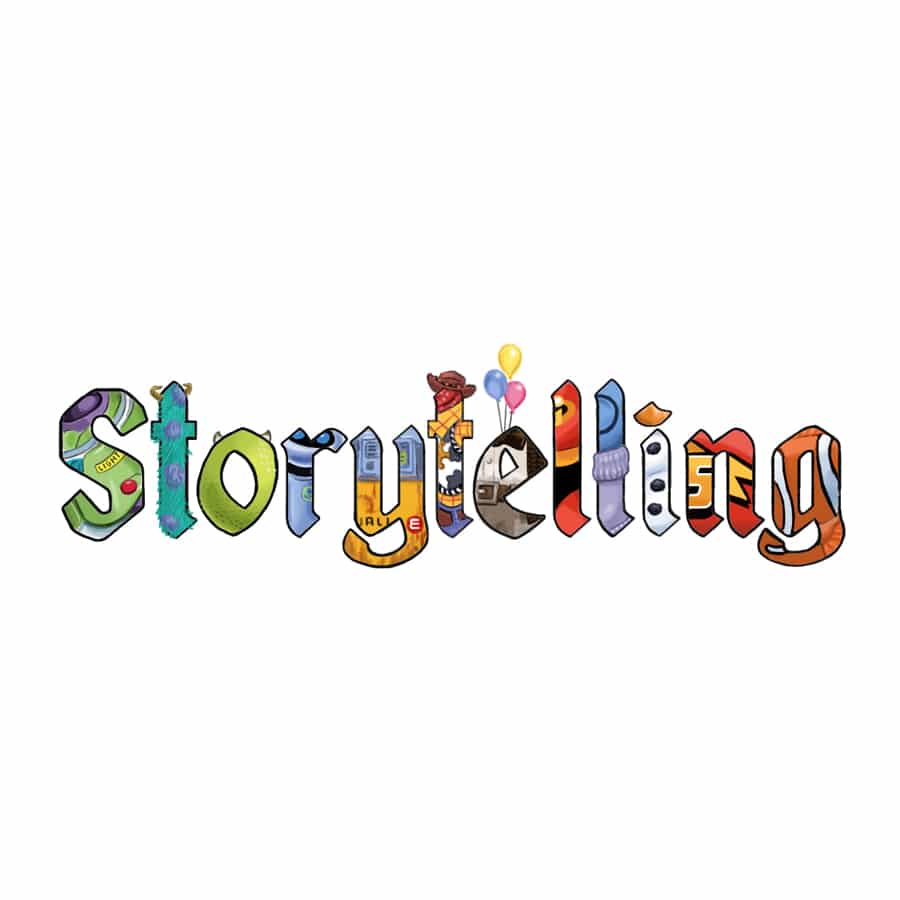When Toy Story 4 was released in 2019, it felt like the biggest thing since…well, since Toy Story 3 came out!
Why? Why are we obsessed with a franchise whose debut film came out over 25 years ago? What has caused us to fall in love with this franchise and these characters so much that the movie portion alone of the Toy Story franchise has grossed in excess of $2 billion worldwide?
Storytelling.
The creative folks at Pixar are masters of storytelling–And they have been rewarded handsomely for it. The 20 feature films they have released over the last 25 years have grossed a combined $13 billion. That’s over $650 million per movie! Four of these films are even on the list of Top 50 Highest Grossing Films of All Time. This is an absolutely astounding stat.
Even more astounding is that Pixar boasts 19 Academy Awards and 8 Golden Globe Awards, meaning that not only are their films popular (and incredibly profitable) at the box office, but even the pickiest critics seem to enjoy them as well.
And it’s all because they have mastered the art of storytelling.
Now, you may be thinking to yourself, “Duncan, my company sells toner for industrial printers. What does ‘storytelling’ have to do with me?” In short, everything. Storytelling doesn’t just make for a great animated film; it allows you to create a great connection to your customers as well. To succeed in this fast-paced, ultra-competitive market, your business must become storytellers.
Why is storytelling so important? Because it’s in our DNA. Storytelling is a tool as old as mankind itself. From ancient, pantomimed stories shared around caveman campfires, to the Egyptian hieroglyphics, to the written word of the Bible thousands of years ago, storytelling has always been the tool of choice for humans to share their biggest, brightest, and most important ideas. As such, we naturally respond to the power of story. A great story can make us laugh, smile, self-reflect, and so much more.
And for brands that tell the right story to the right group of consumers, it’s a way to build an incredible bond, one that, if nurtured correctly, can last for life.
Brands that have the most compelling stories win.
But there’s a catch to all this.
It’s not enough to simply tell a story. Lots of businesses can tell a great story. But in order to harness the power of storytelling, your business must tell a story that resonates— a story that connects to a fundamental consumer truth.
This “fundamental truth” component is exactly why Pixar has been so successful over so many years. Their films are all well-animated and fun to watch, sure. But their biggest box office hits have all had deep, fundamental truths woven throughout, ones that resonated both with the kids in the audience, as well as with the parents that brought them there.
Let’s take a closer look at what I mean.
Toy Story
The story of Woody the Cowboy and Buzz Lightyear the Futuristic Astronaut struck a huge, huge chord with people around the world. It’s not just a great story, but it also plays off some major fundamental truths: the timeless childhood dream to be a cowboy or astronaut, the power of friendship, the fear of growing old, and the pains of feeling insignificant. These truths are why Toy Story has grown to become the cultural force it is.
Monsters Inc.
What does every little boy and girl fear most? The monster in the closet or under the bed, of course! Monsters Inc. tells a story that resonates with this deep-seated fear. It takes viewers back to a time when they were asking their parents to check under the bed for monsters. It also connects with the fundamental truths of feeling different than your peers, facing a rival or a bully at work, perseverance and so much more.
WALL-E
The futuristic WALL-E is littered with fundamental truths. Not only does it tap into the truths of loneliness and pursuing love, but it serves as a literal warning to humanity, glimpse into our future if we continue our bad habits. From making our planet inhabitable to making our bodies obese and functionless, WALL-E opens the eyes of all its viewers, ensuring everyone takes note of the changes they need to start making in their own lives.
As you can see, the reason these Pixar classics were such massive hits were because they touched on so many fundamental truths. They reached deep down inside the viewer and found a truth(s) that resonated. And when you find a truth that resonates, you’re bound for success.
So, how might this relate to a real-world business scenario?
In 2010, when I was working at the Head of Innovation and Creativity for Disney Parks. We were in the middle of a major development project for “Downtown Disney”, and were listening to four major architecture firms give their pitch to win the business. These were major league firms with major league pitch budgets, and the first three came in with exactly what we had expected: large architectural renderings and models, fancy pitch decks, fancy suits, and enough people to field a football team.
The first three pitches were all very impressive, yet none had quite “wowed” our team. The ideas were sound, but for some reason, their pitches just hadn’t resonated with us. Then, the 4th firm entered to give their pitch. However, instead of a team of fancy architects in fancy suits, it was a single representative for the firm. A kind, seasoned pro with a warm smile and a relaxed demeanor.
Rather than start his pitch by walking us through a fancy model, this gentleman proceeded to take our chairs and arrange them in a circle (remember those cavemen campfires?). After we took our seats, he asked us all to close our eyes and simply said “I’d like to tell you a story about an imaginary town where a young animator called Walt met a young girl named Lillian in a place called Disney Springs.” He then painted a picture of that town that all of us could see in our own imagination. By the time he’d finished telling the story, everyone in the room knew which concept we would go with.
Instead of simply trying to wow us with architectural designs, this 4th architect chose storytelling as his vehicle to convey his vision, show us what he saw, and solicit buy-in from our team. And it worked because he connected with a fundamental truth. The sheer fact that he chose storytelling resonated with the entire Disney team, because storytelling is the crux of everything Disney does. In fact, even with all the advancements in computer modelling, Disney still uses Storyboarding to pitch ideas internally – a process that Walt himself introduced to the world over 100 years ago.
The 4th architect, through the power of storytelling, reached inside us all and pulled out this truth. Storytelling won him the business.
Pixar has taught us a lot of things over the last 25 years. It’s taught us how to be a good friend, how to embrace your differences, how to love, and how to avoid ruining our planet. It’s also taught us that the power of storytelling, when used to expose a deep, fundamental truth, is limitless. So, take a lesson from Woody, Buzz, Sully, Mike Wazowski, and the rest of the Pixar team, and start thinking about the stories your business can tell. When told correctly, these stories will forever change the way you communicate with your customers.







